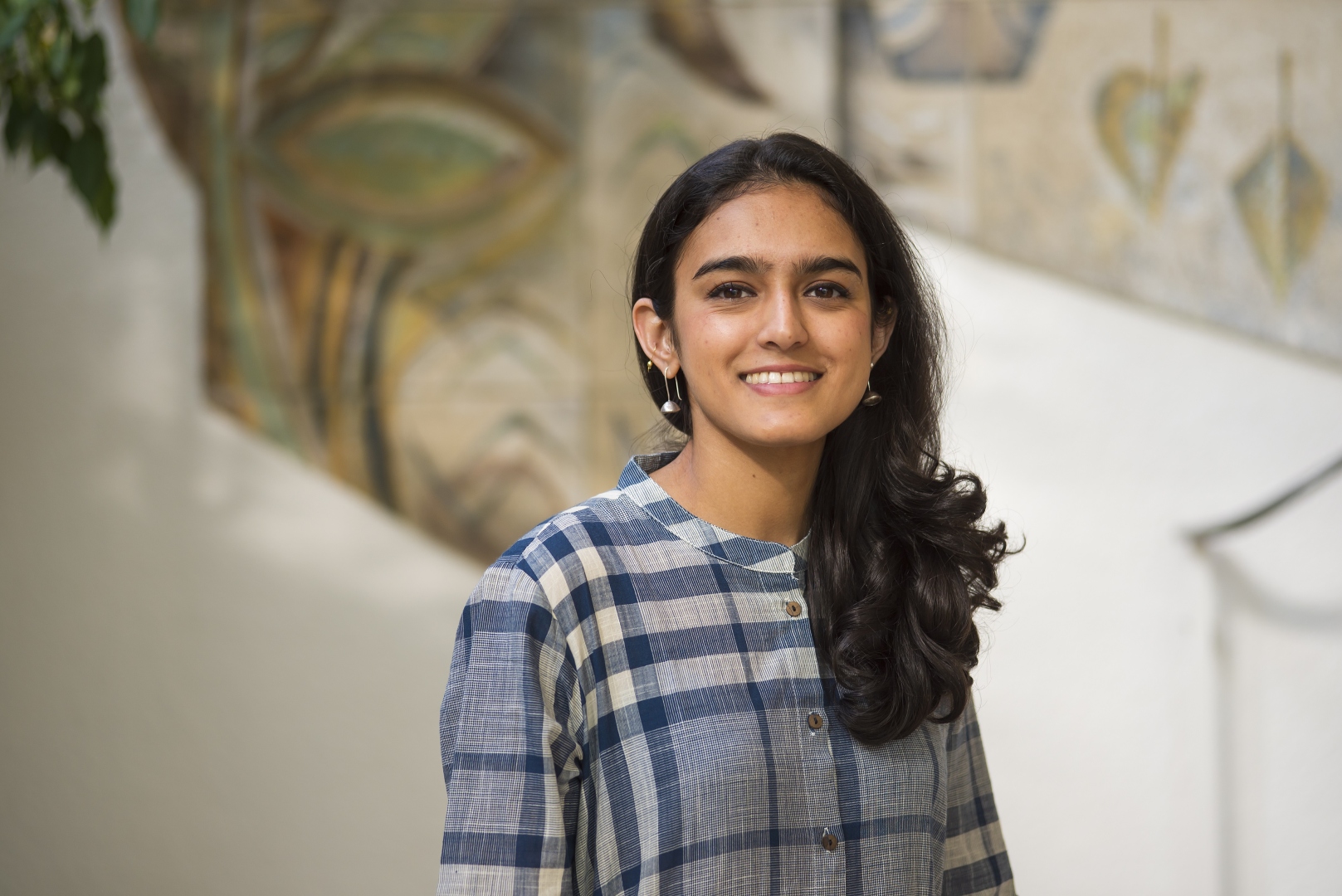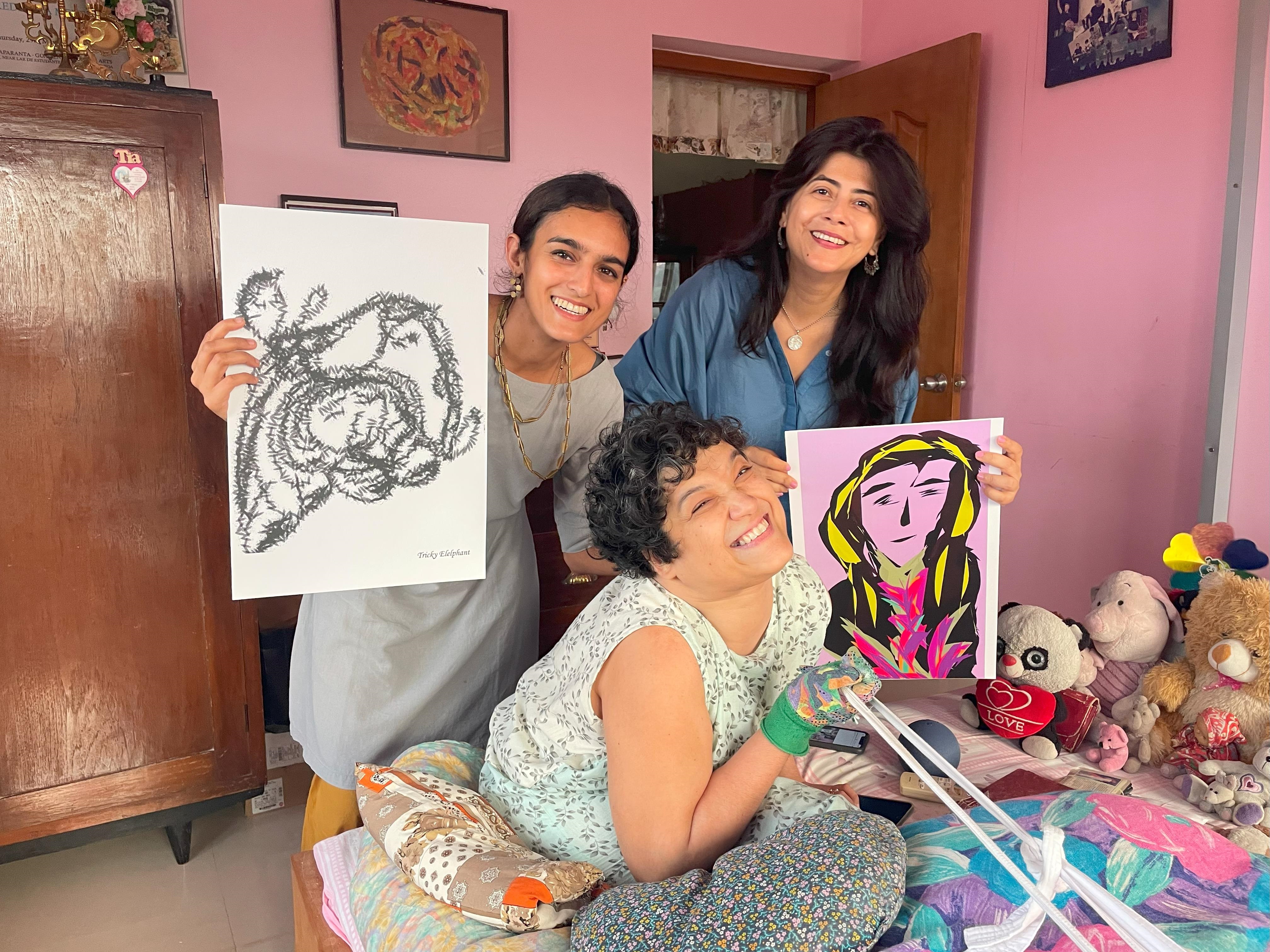With Master's in Public Policy at the United Nations University, and specialisation in social entrepreneurship, Sharada Kerkar, the COO at Museum of Goa and co-founder of the Children’s Art Studio, wishes to bring systemic change to make art profitable, and thus to invest in public art engagements, festivals and international collaborations

The Museum of Goa (MOG) is dedicated to fostering inclusivity and diversity in the art world. MOG platform empowers established, emerging, and aspiring artists to express themselves, gain confidence, and receive exposure. By holding art workshops/classes for children, women, persons with disabilities (PwDs), and senior citizens, MOG intends to provide a platform for diverse voices by breaking down barriers and creating a vibrant, inclusive art ecosystem.
In today's world, creative expression has immense value across sectors and careers. Prioritising academic degrees over artistic expression overlooks the significant contributions arts can make to society. “Literature, theatre, visual arts, music, and dance enrich our culture and create a society that is more empathic, innovative and thinks critically. Also, the creative sector has expanded exponentially, offering diverse opportunities, for example, graphic design, fashion, architecture, interior design, animation, gaming, art direction, sound engineering etc. The options are endless!” exclaims Sharada Kerkar, the chief coordinating officer at Museum of Goa and co-founder of Children’s Art Studio in Pilerne.
During her Master's in Public Policy at the United Nations University, Sharada specialised in social enterprises and gained expertise in policy analysis, social entrepreneurship, sustainable development, cross-sector collaboration, and impact measurement. “Back home, I'm using my knowledge to inform community engagement strategies, develop sustainable business models, collaborate with local stakeholders, measure impact, and align our initiatives with the UN's sustainable development goals, ultimately enhancing the museum's social responsibility,” she shares.
Activities at MOG
Over the past nine years, MOG has showcased the works of over 600 artists through various exhibitions, including 'Unearthed', featuring all women artists, 'Art Inc.', highlighting artists with disabilities, 'A World of My Own', showcasing children's artwork, and exhibitions representing diverse communities, cultures, and nationalities – believing that art is for all.
MOG witnesses over 200 footfalls daily. “Seeing these meaningful interactions and watching communities come together around shared creative experiences is incredibly fulfilling,” says Sharada whose managerial skills have grown with the backing and trust from family and colleagues.
The audience is engaged through a diverse range of projects, workshops, shows, exhibitions, and seminars. MOG showcases a permanent collection of contemporary art created by over 25 renowned Goan and Indian artists. These works tell compelling stories about Goa's culture and heritage.
“We host at least two changing exhibitions alongside our permanent collection, showcasing emerging and established artists. Currently, our ongoing exhibition titled ‘HomoLudens: The Art of Play’ features the works by over 100 artists from Goa, India, and the Netherlands, exploring themes of play,” adds Sharada.
MOG Sundays is their flagship program every Sunday for the past eight years. Hosting over 400 expert speakers from various fields (art, architecture, science, management, business, environment, policy-making, and activism), the programme is a free platform, fostering a culture of intellectual curiosity and community engagement.
Making art profitable
“To make art profitable, we need systemic change with exposure and accessibility as keys. We must invest in public art engagements, festivals, and state-of-the-art institutions with international collaborations. Increased annual government investment in the art and cultural sector is crucial. With multiple emerging professions and avenues, art can become a viable career,” explains Sharada.
Her most cherished achievements are the feedback from visitors who say that they enjoyed the museum more than the beaches! Others have been being able to mobilise over 10000 students every year to visit MOG and give them a glimpse into contemporary arts and history, and to be able to work with PwD communities and open up the space for the first time to showcase their talent and build partnerships to tread the path of inclusivity.
Recognising the potential of arts as a means for rural women to earn a livelihood, Sharada founded 'AAMI GOA', a non-profit social enterprise that works with underprivileged women to create handicrafts and souvenirs showcasing Goa's rich culture. “Our mission is to empower women entrepreneurs, to redefine Goa's handicraft industry,” she announces.
Some of the means adopted are to reignite local crafts, establish self-help groups, provide access to livelihoods and transfer skills through training. There are government policies that support the village economy model. Entrepreneurships can be built preserving cultural heritage. Sustainable livelihoods can also be promised. This will transform Goa's rural economy and make women the drivers of change.
Children’s Art Studio

With a passion for working with children, Sharada’s first initiative was building the Children's Art Studio as a creative space where kids can explore and engage with art. Art and Sustainability Program is a grant-funded initiative for 2,500 government school children, focusing on art education and cultural history.
Sharada also curated exhibitions of women artists, artists with disabilities, and a joint India-Netherlands project - ‘Homo Ludens: The Art of Play’ and developed art programs, workshops, and collaborations with local and international institutions. She feels that Goa has immense potential to become a global cultural hub. To achieve this one should focus on sustainable tourism initiatives highlighting art, culture, and heritage along with promoting local artists. Partnering with creative practitioners and fostering global collaborations, Goa can be established as an art capital. As a catalyst between art, culture, and community, MOG is eager to collaborate with the government to drive this change and propel Goa to new heights, she asserts.
Art as a way of thinking
For Sharada, art isn't just a skill; it is a way of thinking and seeing the world differently. Systemic change is also equally crucial, involving government policies supporting arts education and infrastructure, institutions and programs for art education and professional growth, and resources for artists, she points out. “Children should have the freedom to explore various subjects, including the arts. They should be allowed to discover their passions and make informed decisions about what they want to pursue. Practically, to shift the emphasis from academics to art, one needs to change the mindset. Education is more than just degrees; it's about cultivating curiosity, creativity, and critical thinking. The purpose of education is to expand our understanding of the world, our society and ourselves as humans,” concludes Sharada.